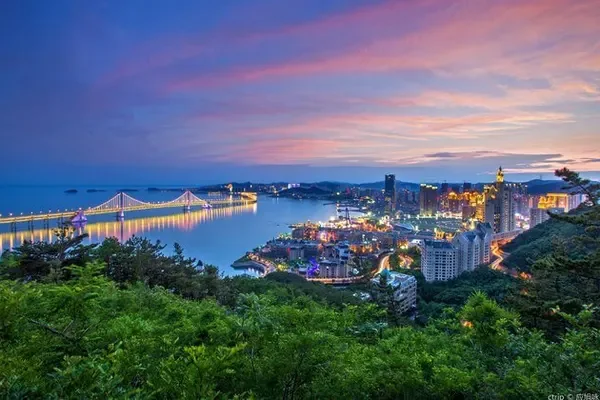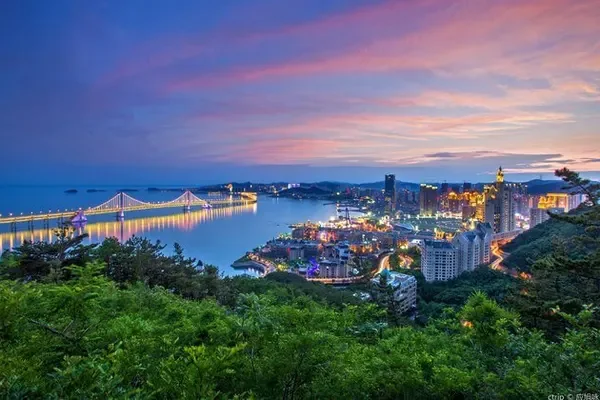Yunman Shulin Prairie is located in Waigoumen Township, Fengning County, Chengde City, Hebei Province. Waigoumen is also called Senjitu. Senjitu is Mongolian. It translates to a beautiful mountain cave, because in Xishan Bay, there is a There is a stone hole the size of a door leaf at the top of the cliff pinnacle tens of feet high, hence the name. Shulin grassland, Shu is sparse, meaning sparse grassland.
It is 280 kilometers away from the Capital Airport, 120 kilometers away from Fengning County in the south, 30 kilometers away from Duolun County in the north, and adjacent to the paddock in the east. With a total area of 132 square kilometers and a total investment of 3 billion yuan, the main construction contents include sparse forest grassland scenic spot, tourist service center and ecological parking lot, Tiancheng Station, Yongtaixing Palace Hotel, and Tea Salt Ancient Town. The scenic spot mainly focuses on the concept of "secret land" and wild luxury vacation, and builds a domestic first-class resort with a world vision and international standards. It is based on the Luan River, ecological wetlands, sparse forests and grasslands, hills and green forests, and natural sand dunes. Mountains, rivers, grasslands , sparse forests, deserts, hills, forests, diverse environments, organic combinations, and integration, known as the secret land of sparse forests and grasslands, Shangri-La outside the Great Wall, and Masai Mara in China.
Yunman Shulin Prairie Tourist Service Center
The service center is adjacent to the National No. 1 Scenic Avenue, covering an area of 40,000 square meters and a construction area of 5,695 square meters. It can provide services such as ticket sales, transfers, consultation, shopping, rest, catering, and souvenir sales. The architectural shape adopts the classical architectural form of the Royal Northern Tour Palace. The humanistic beauty of the building is combined with the natural beauty of the site. The north-south sequence axis is adopted, and the layout is centered, highlighting the style of the Royal Palace. The first floor provides ticket sales, rest, supermarket and other services, the second floor is mainly for catering and reception, and the third floor is the staff office area.
Tiancheng Station
Historically, it was an inn where merchants of the Ancient Tea and Salt Road lived and dined. It covers an area of 30 acres, with a construction area of 1,774 square meters, 18 guest rooms, and a restaurant for 80 people. Duoyifang, Mengtuoling, Longmenzhan, this reconstruction restores the prosperous scene at that time, brings an anti-ancient experience, and is an important node of the National No. 1 Scenic Avenue.
Yunjing Palace Hotel (also known as Yongtaixing Palace Hotel)
On the eve of the Duolun League in May of the 30th year of Kangxi (1691), Kangxi stationed in Senjitu, which is roughly the location where the palace was built. It is adjacent to the National No. 1 Scenic Avenue and is located in Waigoumen Township, Fengning Manchu Autonomous County, Chengde City. Located in the hinterland of Yongtaixing Shulin Grassland with beautiful scenery, at the beginning of construction, 15 local sand elm trees were cleverly avoided according to the terrain, and combined with the architectural layout and site environment, it formed a landscape with the mountains on its back, the wetland facing the Luan River, and surrounded by grasslands. The architectural style of wetlands, deserts, forests, hills, rivers and other natural landscapes surrounded by natural oxygen bars.
The "Palace" takes the meaning of the royal post on the ancient road, and reproduces the history and culture of Manchuria and Mongolia. The hotel's overall functional layout, facilities and equipment are designed and constructed with full reference to the "Jinling" standard and the evaluation standard of Yunjing Hotel. The architectural design is based on the theme of "Manchu style". The Mongolian national characteristics and national symbols show the good wishes of the harmonious coexistence of the nation.
Yunjing Palace Hotel covers an area of about 40 mu, with a construction area of 24,132 square meters. The roof of the palace resembles the crown of an emperor in the Qing Dynasty. There are 165 rooms in total, including superior room, family room, deluxe room, executive room and other room types. Aiming at contracted guests and individual tourists, the hotel has designed supporting facilities and functions for catering services, including 8 private rooms of Chinese restaurants, a cafeteria that can accommodate 139 seats, and a tea bar in the lobby. The hotel is also equipped with supporting facilities such as conference facilities, gymnasium, large banquet hall, and large-scale recreational areas around the hotel.
The decoration of the hotel rooms is modern, clean and comfortable. Through the large floor-to-ceiling windows, you can see the mountains in the distance and the Luan River nearby. The meticulous and warm service will bring you a natural, comfortable and free leisure trip. During the day, you can smell the fragrance of flowers; at night, the stars are dotted with stars, and the Milky Way is shining brightly, which makes people empty their minds, release stress, and return to nature.
"Cloud Slow Time" Camp
The camp is built next to mountains and rivers, and there are many wooden villas and starry sky tent leisure areas. The wooden houses are fully equipped with three rooms, suitable for several families to travel and live together. Both the wooden house and the star tent can enjoy the beautiful scenery of the Luan River, and outdoor barbecues and other activities can also be carried out outside the wooden house.
There are teahouses, folk theaters, a street of ancient merchants, a street of tea and salt merchants and snacks, exhibition halls and other buildings in the ancient town of tea and salt. It is the core node of the cultural route of the ancient tea and salt road and a tourist information service center.
asked the turtle
Entering the sparse forest grassland, you can see a small hill that looks like a turtle at a glance. The local people have a poem describing, "It should have been a dragon species, but it came out of the hydrated rock peak, and the scales are still there, looking at the moon with its head." The scenic area covers an area of 50 mu, bounded by the Shahe River on the left, the windmill on the front, and the second mountain on the right. The wild elm trees and the pile of stones under the trees in the front are the original Yongtaixing Post Station. The disrepair is now run down.
Love of Sand and Grass
There are many natural landscapes in the scenic area, among which there is a grassland desert area that is very mysterious. The formation of grassland desert is due to the desertification of the land. Dead trees, old roots, and dry branches have the feeling of wood carving. The solitary smoke in the desert, the afterglow of the setting sun, the tranquility and loftiness, like a natural picture formed naturally, in the slow-moving painting, there is a feeling of a world away, feeling that everything around is quiet, there is no complicated work, and there is no trivial daily life, Just peace of mind and peace of mind.
Sand River Cross Country
The Yunman sparse forest prairie is so natural and diverse, not only quiet and lofty, but also fast and passionate. On the Shahe cross-country track, there are green hills on both sides of the bank, and the stream flows slowly. Driving in it, you can experience the speed and passion in the movie in one second.
(sparse forest sunset)
(song of life)
(Luanhe Swan Goose)
(Prairie Love)
(Winter Sonata)
(Prairie Pastoral)
(Windmill)
(Saibei Snowfield)
In the morning, you will be accompanied by everything in the mountains and forests, and in the evening, you will enjoy the tranquility and fantasy of the night sky. This summer, take a few days to give it to Yunman Shulin Prairie. You can go there in the morning, and there is no need to return in a hurry. Empty yourself and experience a wonderful journey of physical and mental cultivation. From mountains to rivers, from grasslands to deserts, from nomadic culture, Mongolian culture, to tea-salt ancient road culture, the Yunman sparse forest prairie is worthy of your deep exploration.
![[Yunman Shulin Prairie] Bashang Grassland Secret, Beijing North Shangri-La, China's Masai Mara!](https://www.anyonetrip.com/uploads/202412/05/65fadc4e76c4ddc8.webp)


![[Chengde] Winter in Ma Town, the scenery is endless](https://www.anyonetrip.com/uploads/202302/02/b1b121b21e717adb.webp)